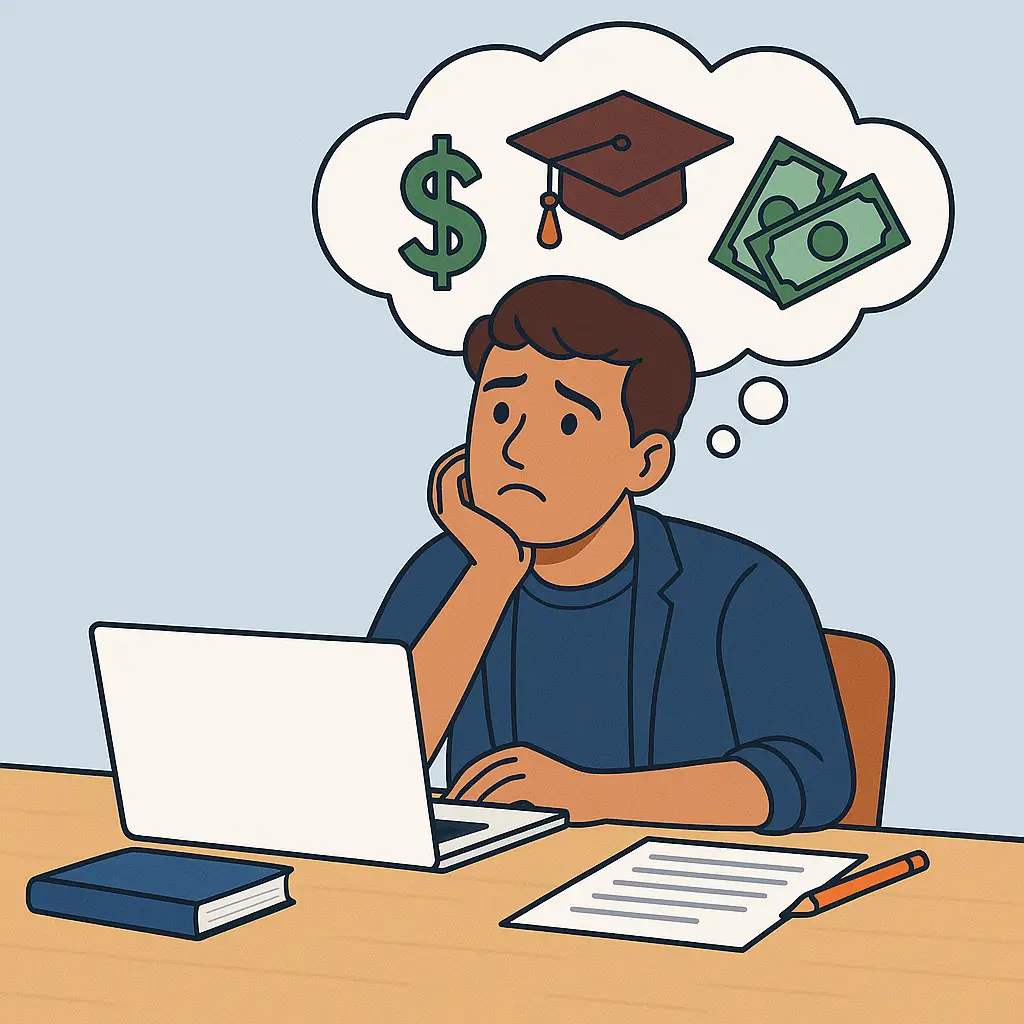Guide to Student Loan Debt in the United States
What Is Student Loan Debt?
Student loan debt refers to money borrowed to pay for higher education expenses, including tuition, housing, books, and fees. It is one of the largest types of consumer debt in the U.S., affecting over 42.7 million borrowers. The average loan amounts in 2025 are approximately $38,000 for federal student loans and up to $41,600 when private loans are included. This provides a clearer sense of the typical individual debt burden.
Student loans fall into two broad categories:
- Federal Student Loans: Issued or guaranteed by the U.S. Department of Education (e.g., Direct Subsidized/Unsubsidized Loans, PLUS Loans).
- Private Student Loans: Issued by banks, credit unions, or private lenders. Terms vary widely and often lack borrower protections.
Why Is Student Loan Debt So Common and Problematic?
- Rising Tuition Costs: College costs have increased dramatically over the last few decades.
- Limited Discharge Options: Most student loans cannot be erased in bankruptcy.
- Delayed Repayment: Many loans offer deferment or grace periods, but interest often accrues.
- Income Instability After Graduation: Borrowers may struggle to find work that matches their degree.
- Long-Term Impact: Debt often delays milestones like homeownership, marriage, or starting a family.
Federal Student Loan Collection Process
- Delinquency: Begins after a missed payment.
- Default: After 270 days of non-payment, the loan enters default status.
- Collections: The loan is referred to the Department of Education’s collections or private collection agencies.
- Administrative Wage Garni shment: The government can garnish wages without a court order.
- Treasury Offset: Tax refunds and federal benefits (e.g., Social Security) can be seized.
Private Student Loan Collection Process
- Delinquency and Default: Terms vary by lender; default can occur after 90–180 days. However, it is important to highlight that default rates are significantly lower for private student loans (about 1.6%) compared to nearly 5% for federal student loans.
- Collection Agencies: Loans are sent to third-party collectors.
- Lawsuits: Private lenders must sue to garnish wages or seize assets.
- Credit Damage: Missed payments and defaults severely impact credit scores.
Options for Managing Student Loan Debt
Federal Loans
- Income-Driven Repayment (IDR) Plans: Payments based on income and family size.
- Deferment or Forbearance: Temporary pause on payments for hardship.
- Loan Forgiveness Programs:
- Public Service Loan Forgiveness (PSLF)
- Teacher Loan Forgiveness
- IDR Forgiveness after 20–25 years
- Consolidation: Combine multiple loans into one for simplicity.
- Fresh Start Program: Federal defaulted borrowers can regain good standing (as of 2023).
Private Loans
- Refinancing: Replace existing loans with a new private loan (credit required).
- Negotiation: You may settle for less or arrange alternate terms if the loan is in collections.
- Co-Signer Release: Some lenders allow co-signers to be removed after consistent repayment.
Consumer Rights and Protections (Student Loans)
Federal Student Loans
- Collection Protections: Some programs temporarily paused collections due to COVID-19 or new policy changes. The guide mentions the pause in federal student loan collections related to the pandemic, but it is important to note that this pause ended on May 5, 2025. As of that date, the government resumed wage garnishments, tax refund offsets, and Social Security benefit seizures for defaulted federal student loans, marking a significant shift in federal policy.
- Loan Servicer Regulations: Servicers must provide accurate info and handle disputes properly.
- Right to Loan Rehabilitation: You may remove a default by making 9 consecutive payments.
Private Student Loans
- Fair Debt Collection Practices Act (FDCPA): Applies if the debt is sent to third-party collections.
- State Laws: May provide additional protections (statute of limitations, licensing requirements).
State Licensing and Legal Variations
- Statute of Limitations: Varies by state—after it expires, private lenders may not sue.
- Collector Licensing: Required in most states to pursue private student loan debt.
- Discharge in Bankruptcy: Rare, but possible under “undue hardship” (requires legal proof).
States Where Debt Collectors Do NOT Require a License (as of 2024)
Georgia, Kansas, Kentucky, Michigan, Missouri, Montana, New Hampshire, Oklahoma, Pennsylvania, South Carolina, South Dakota, Tennessee, Wyoming
Check with your state attorney general or consumer protection agency for updates.
How to Verify Student Loan Debt or a Collector
- Ask for written validation of the loan and amount owed
- Check your account status at studentaid.gov for federal loans
- Contact your original lender or servicer
- Verify if the collector is licensed in your state
Key Takeaways
- Student loans are long-term debts with major financial implications
- Federal loans offer more repayment and forgiveness options than private loans
- Private student loans often lack flexibility and may involve legal action to collect
- Always verify who owns your loan and your repayment options before acting
Sources
Schedule Free Consultation
Take the first step toward a debt-free future with guidance you can trust.

